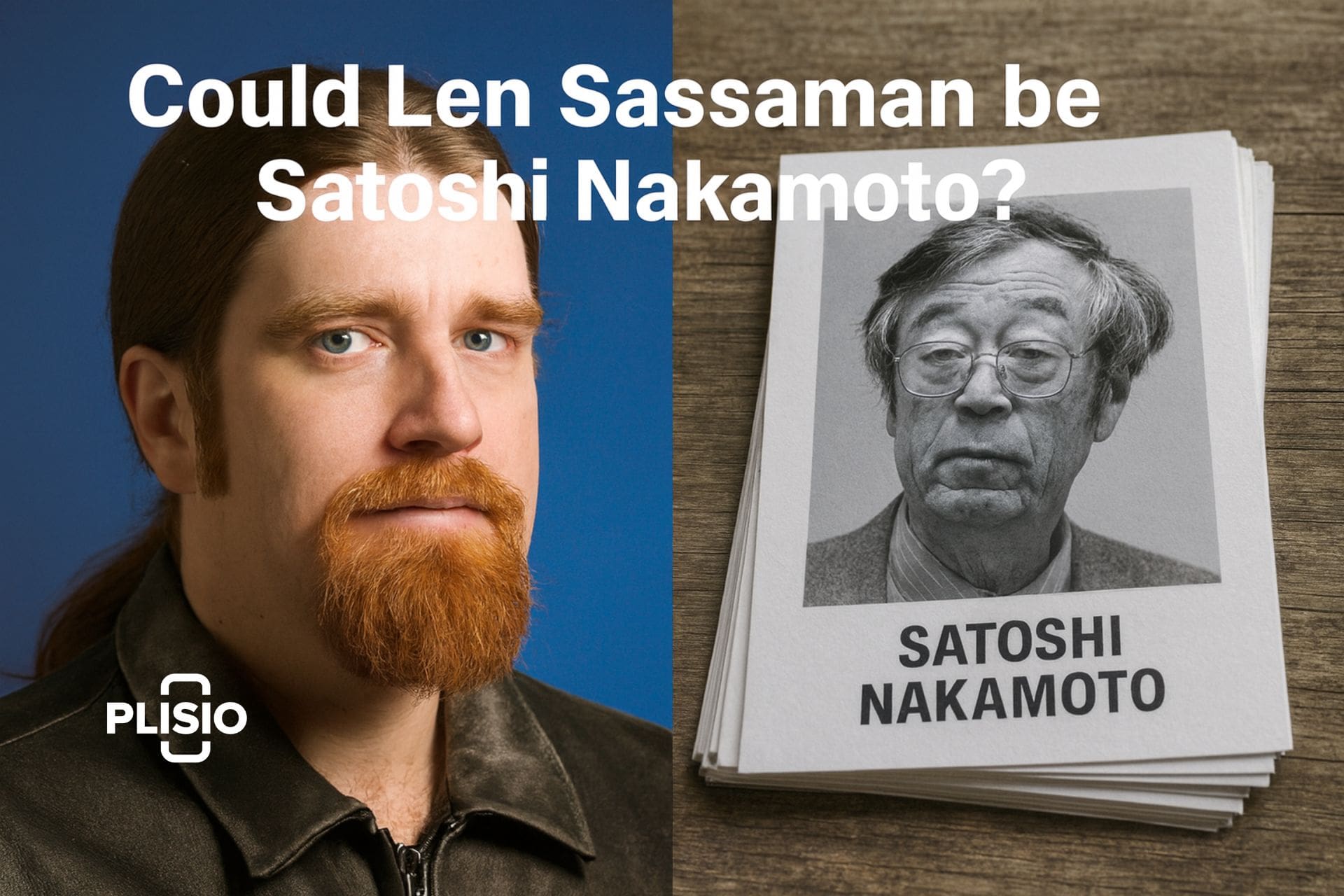The Bitcoin Mystery: Len Sassaman and Satoshi Nakamoto

Bitcoin’s history is often wrapped in myth. It didn’t appear because a finance expert pitched it on Wall Street or because a Silicon Valley billionaire unveiled it on stage. Bitcoin’s creation is rooted in the cypherpunk community — cryptographers, programmers, and privacy advocates who believed the internet should defend its users instead of surveilling them. For cypherpunks, privacy wasn’t optional; it was a fundamental right.
This was the world of Hal Finney, Adam Back, Wei Dai, David Chaum, and countless others. They were experimenting with open-source code, designing trustless systems, and developing tools like Pretty Good Privacy (PGP), digital signatures, and anonymous remailers. Their work wasn’t about making money. It was about building structures of freedom that couldn’t be shut down. And within that environment, we find Len Sassaman.
Meet Len Sassaman: Crypto Community’s Privacy Advocate
Len Sassaman was a computer scientist and cryptographer, a member of the cypherpunk community, and a dedicated privacy advocate. He contributed to Mixmaster remailer and worked on GNU Privacy Guard (GPG), extending the reach of cryptographic tools that protected people online. Sassaman died by suicide on July 3, 2011, in Leuven, Belgium, at the age of 31. Following his death, questions about his ties to Bitcoin’s development and the identity of Satoshi Nakamoto only grew louder.
Some see him as a possible candidate for Satoshi Nakamoto — the pseudonymous creator of Bitcoin — given his close ties to Hal Finney, Adam Back, and other early Bitcoin figures. Meredith Patterson, his wife and a respected computer scientist, has always rejected the claim. Yet the speculation continues, driven by the strange timing of Sassaman’s death and Satoshi’s sudden disappearance.
Early Work in Cryptography and the Cypherpunk Movement
Len Sassaman was born in 1980 and by the time he was a teenager, he was already experimenting with cryptography. Sassaman worked with Phil Zimmermann, the inventor of Pretty Good Privacy, and his focus stretched beyond simple password security. He wanted to conceal entire identities in digital spaces. At KU Leuven in Belgium, Sassaman worked on cryptographic protocols that looked very much like the early building blocks of what would later become Bitcoin.
His ideals echoed those of Bitcoin itself: decentralization, anonymity, and protection from control. That overlap has made Sassaman a natural candidate for those searching for Satoshi Nakamoto’s identity.
Len Sassaman and Hal Finney: Crypto Connections
Hal Finney, who was not only a cryptographer but also the first person to ever receive a Bitcoin transaction directly from Satoshi, shared long-standing ties with Sassaman. Both men worked on Pretty Good Privacy at Network Associates and collaborated on anonymous remailer projects. Remailers were early privacy tools that stripped metadata from emails before forwarding them, protecting the identity of the sender.
Their professional collaboration and proximity in California created fertile ground for speculation. Some argue that if Satoshi was not a single person but a collective — perhaps a strategist, developer, and tester — then Sassaman and Finney fit that model well.
Tribute to Sassaman on the Bitcoin Blockchain
One of the strongest signals connecting Sassaman to Bitcoin is the tribute embedded in block 138,725 of the Bitcoin blockchain. Dan Kaminsky, a well-known computer security researcher, encoded an ASCII portrait of Sassaman and revealed it shortly after Sassaman’s death at Black Hat USA. That permanent memorial raised eyebrows: was it just a tribute, or was it also a nod to Sassaman’s deeper role in Bitcoin’s creation?
Silence Around Bitcoin’s Creator Satoshi Nakamoto
Other cypherpunks, like Adam Back and Nick Szabo, commented publicly about early digital currency concepts. Sassaman did not. His silence is striking. He worked side by side with the people most involved in Bitcoin’s birth, yet he never left behind a single public opinion on it.
The silence grew more mysterious after Satoshi Nakamoto vanished in 2010. Two months before Sassaman’s death, Satoshi was still active. Just nine days after Sassaman died, Satoshi’s account resurfaced with the strange message: “I am not Dorian Nakamoto.” Why break the silence then? Why deny a claim that hadn’t even been made yet? The timing continues to intrigue researchers.
Sassaman’s Writing Style and the Cryptography Debate
Stylometric analysis, the study of writing style, has been applied to Satoshi Nakamoto’s posts and the Bitcoin whitepaper. Researchers have noted that Nakamoto’s language mirrors Sassaman’s style: precise, calm, slightly academic but approachable. Sassaman’s remailer documentation and academic papers often used British-style punctuation and deliberate phrasing that resemble Nakamoto’s.
Still, there are arguments against the theory. Early Bitcoin code was functional but sloppy — not what you’d expect from a cryptographer like Sassaman, who was known for precision. Some argue this proves he wasn’t Satoshi. Others counter that disguising his style would have been a clever move if anonymity was the goal.
New HBO Documentary, Polymarket Bettors, and Crypto Speculation
More than a decade later, speculation continues. The upcoming new HBO Len Sassaman documentary exploring the search for Satoshi Nakamoto’s identity has revived the discussion. Bettors on Polymarket even place wagers on whether Sassaman might be revealed as the Bitcoin creator. Within the crypto community, some dismiss the theory, while others point to it as an answer to one of Bitcoin’s greatest mysteries.
The obsession with Sassaman even extends to small details: his cat inspired a meme-coin ($SASHA) launched on Solana in 2024. From tributes in the Bitcoin blockchain to speculative tokens, Sassaman’s name has become part of crypto folklore.
Sassaman’s Death and the Myths That Followed
Len Sassaman died by suicide on July 3, 2011. Following his death, rumors spread that he left behind a note with 24 random words — eerily similar to today’s Bitcoin seed phrases. The claim is most likely false. Seed phrases weren’t introduced until BIP39 in 2013, two years after Sassaman’s death. But like many parts of crypto culture, myths grow where mysteries exist.
The Strongest Arguments Against Sassaman Being Satoshi
For every argument tying Sassaman to Bitcoin, there are counterpoints:
- He never claimed to be Satoshi, and no close friend or colleague has ever suggested it. Meredith Patterson has explicitly denied the theory.
- Unlike Nick Szabo’s “bit gold” or Adam Back’s “Hashcash,” Sassaman left no writings that directly referenced digital money systems.
- Early Bitcoin code was clunky, unlike Sassaman’s typically polished cryptographic work.
Skeptics argue that Sassaman was too skilled to have written the Bitcoin source code in its original state. Supporters counter that Bitcoin’s real brilliance was not in the code itself but in the system design — something a thinker like Sassaman excelled at.
Group Theory: Was Satoshi Nakamoto a Collective?
One theory is that Satoshi was not one person but a group. This explains the different tones in Nakamoto’s messages, the rapid pace of Bitcoin’s development, and how the project survived even after Nakamoto disappeared. In this view, Sassaman may not have been Satoshi alone, but part of a team.
What Sassaman Believed: Crypto Values and Privacy
Sassaman’s philosophy is clear in his own words: “You can’t make people free by forcing them to identify themselves.” That belief resonates deeply with Bitcoin’s design — a trustless, pseudonymous system resistant to surveillance. Even if Sassaman wasn’t Satoshi, Bitcoin’s creation carried forward his ideals.
Legacy in Crypto, Blockchain, and the Search for Satoshi Nakamoto
Whether or not Sassaman was Satoshi Nakamoto, his impact on cryptography, the cypherpunk movement, and Bitcoin’s history is undeniable. He helped build the foundations that made Bitcoin’s creation possible. His name lives on in the Bitcoin blockchain, in tributes from peers, in crypto lore, and even in new HBO documentaries.
The search for the true identity of Bitcoin’s creator may never end. But the story of Leonard Harris Sassaman — cryptographer, privacy advocate, and member of the cypherpunk community — remains central to the larger Bitcoin mystery. Even if Sassaman was not Satoshi, his life and work shaped the conditions that made Bitcoin’s development possible.

